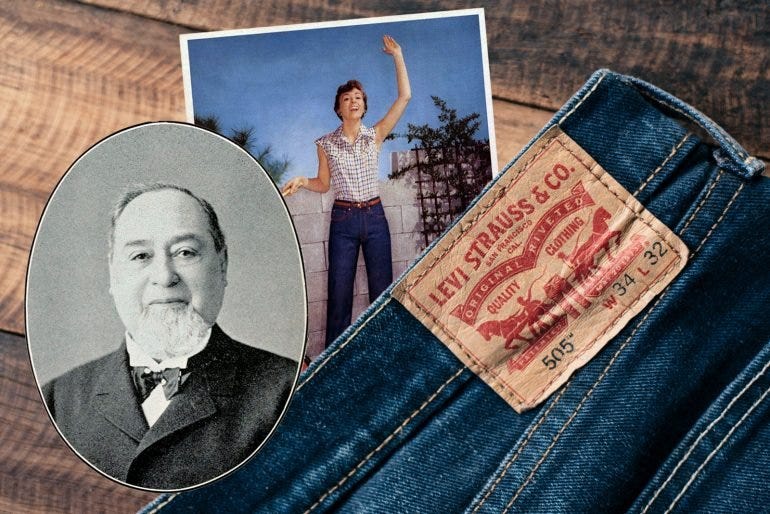prekforalldc.org – The tale of Levi’s is not just a story about clothing; it’s a narrative woven into the very fabric of American history, innovation, and cultural identity. It’s a story that begins in the 19th century and continues to unfold today, embodying the spirit of resilience, freedom, and transformation. At the heart of this tale is denim, a material that has become synonymous with the American dream, and the American jeans, a garment that has transcended fashion to become a global symbol of casual wear.
The Birth of an Icon
The story of Levi’s begins in 1853 when Levi Strauss, a Bavarian immigrant, set out for the American West in search of opportunity. He settled in San Francisco, a city buzzing with the energy of the Gold Rush. Initially, Strauss dealt in a variety of goods, including cloth, but it was his introduction to denim that would change the course of history.
In the late 1860s, Strauss partnered with Jacob Davis, a tailor from Nevada, who had developed a technique for reinforcing trousers with copper rivets at points of stress. Together, they patented this idea and laid the foundation for what would become the world’s most famous jeans: Levi’s. The first pair, known as “waist overalls,” was made from denim and featured a distinctive copper rivet at the stress points, setting the stage for a fashion revolution.
Denim: The Fabric of America
Denim, the material that defines Levi’s, has its own rich history. The word “denim” is believed to be derived from “serge de Nîmes,” a type of cotton serge fabric from Nîmes, France. This durable, work-friendly fabric was an ideal choice for the rugged lifestyle of the American West. Over time, denim became more than just a material; it became a symbol of the American spirit, representing hard work, resilience, and the pioneering ethos.
The Evolution of American Jeans
Levi’s jeans quickly became popular among miners, cowboys, and farmers for their durability and comfort. However, their appeal was not limited to the working class. As the 20th century dawned, Levi’s began to transcend their utilitarian roots and enter the realm of fashion. The introduction of the zipper fly in the 1930s and the iconic “Levi’s” red tab in the 1950s further cemented their status as a fashion statement.
The 1950s and 1960s were particularly pivotal for Levi’s. The jeans became closely associated with youth culture, rebellion, and the counterculture movement. Iconic figures like James Dean and Marilyn Monroe were often photographed wearing Levi’s, further cementing their place in popular culture.
Global Icon
Today, Levi’s are a global phenomenon, worn by people of all ages, backgrounds, and walks of life. The brand has expanded its product line to include a variety of styles, from the classic 501 to more contemporary designs, catering to a diverse range of tastes and preferences. Despite this evolution, Levi’s has managed to maintain its core identity, staying true to its roots while embracing innovation and change.
Legacy and Future
The story of Levi’s is a testament to the enduring appeal of denim and the American jeans. It’s a story of innovation, adaptation, and the universal appeal of a garment that has transcended its utilitarian origins to become a cultural icon. As Levi’s continues to evolve, it remains a symbol of American ingenuity, a reminder of the country’s pioneering spirit, and a garment that, more than a century after its creation, still embodies the essence of freedom and self-expression.
In the ever-changing landscape of fashion, Levi’s stands as a beacon of continuity and authenticity. It’s a brand that has not only withstood the test of time but has also managed to remain relevant, reinventing itself while staying true to its roots. The story of Levi’s is far from over; it continues to be written with each new design, each new innovation, and each new generation that adopts the American jeans as their own.
